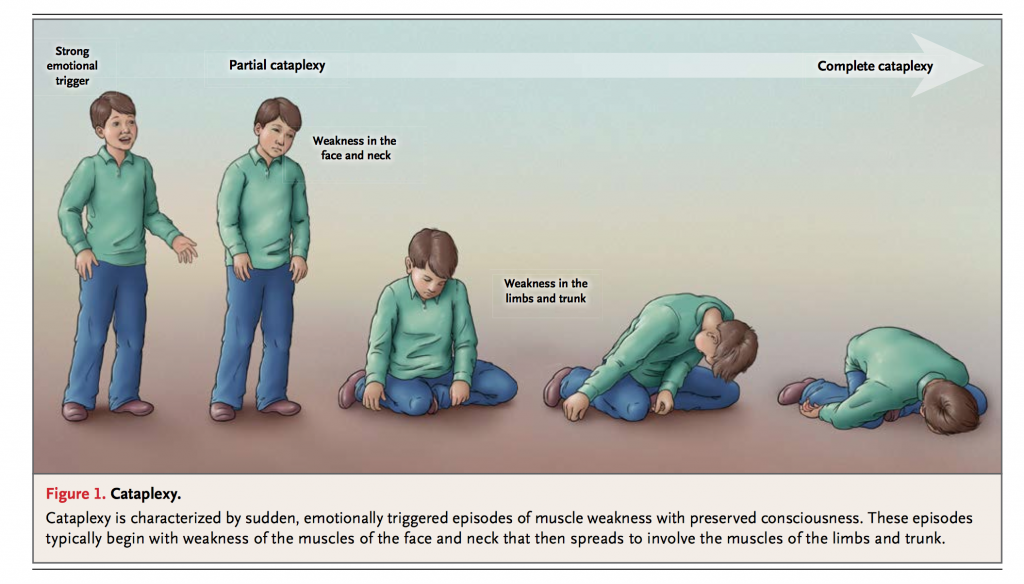

Presence of unprovoked grimaces or jaw-opening episodes with tongue thrusting or global hypotonia without any obvious emotional triggers in children or adult patients within the past 6 months.Occurrence in patients with long-standing disease of sudden bilateral loss of muscle tone with intact consciousness for a few seconds to minutes triggered by laughter or joking.Cataplexy episodes, that occur at least a few times in a month, can be defined as either: 1.4), that atypical cataplexy has no diagnostic value, thus the need to call cataplexy only with typical presentations.Episodes may also be triggered by anger, but rarely by stress, fear, or physical exertion. The triggering experiences are usually positive, like laughter, witty conversations, and pleasant surprise. Still, some doctors find the test helpful when symptoms are atypical. Cataplexy is a sudden muscle weakness that occurs while a person is awake. According to DSM-5 criteria, narcolepsy is the daily occurrence of uncontrollable need to sleep, daytime lapses or napping for at least 3 times per week for the past 3 months with the presence of any of the following: In people with narcolepsy, the sleep studies usually provide clear evidence of.Relevant medication or drug use including alcohol intake.Determine whether main complaint is sleepiness or fatigue.Presence of both excessive daytime sleepiness & cataplexy highly suggest narcolepsy No atypical depression - No sleep disorders (exclude Narcolepsy and Menstruation-related hypersomnia) - No substance abuse (particularly benzodiazepine).

The daytime sleepiness is not better explained by another sleep disorder, medical condition, or medication use. We included 109 patients with a definite history of cataplexy and a proven hypocretin-1. In narcolepsy without cataplexy, excessive daytime sleepiness must be present almost daily for at least three months, but there is either no history of clear-cut cataplexy or a history of atypical (questionable) cataplexy-like episodes. Additionally, children’s cataplexy may also manifest as subtle and unusual facial expressions or choreic-like movements which are not seen in adults 7, 8. In about 10 percent of cases of narcolepsy, cataplexy is the first symptom to appear and can be misdiagnosed as a seizure disorder. Some people may only have one or two attacks in a lifetime, while others may experience many attacks a day. METHODS We aimed to provide a detailed description of the phenotypic variability of cataplexy. In children, atypical manifestations of cataplexy can include blurred vision, irregular breathing, sudden loss of smiling, or semipermanent eyelid and jaw weakness. The symptoms of cataplexy may appear weeks or even years after the onset of EDS. Identify all symptoms that suggest narcolepsy However, the current definition of cataplexy is not very precise and the common distinction between 'typical' and 'atypical' cataplexy is not well codified.


 0 kommentar(er)
0 kommentar(er)
